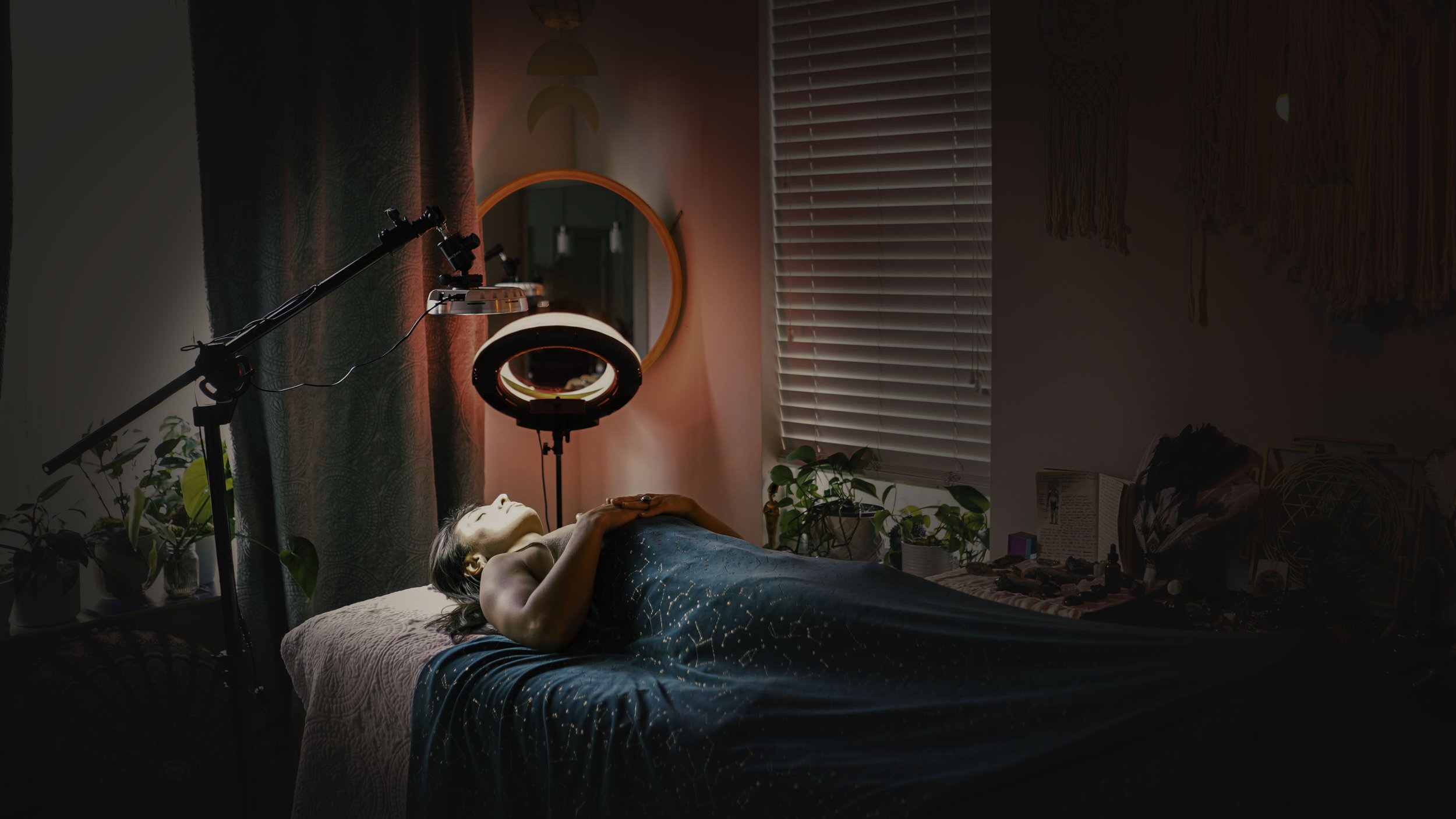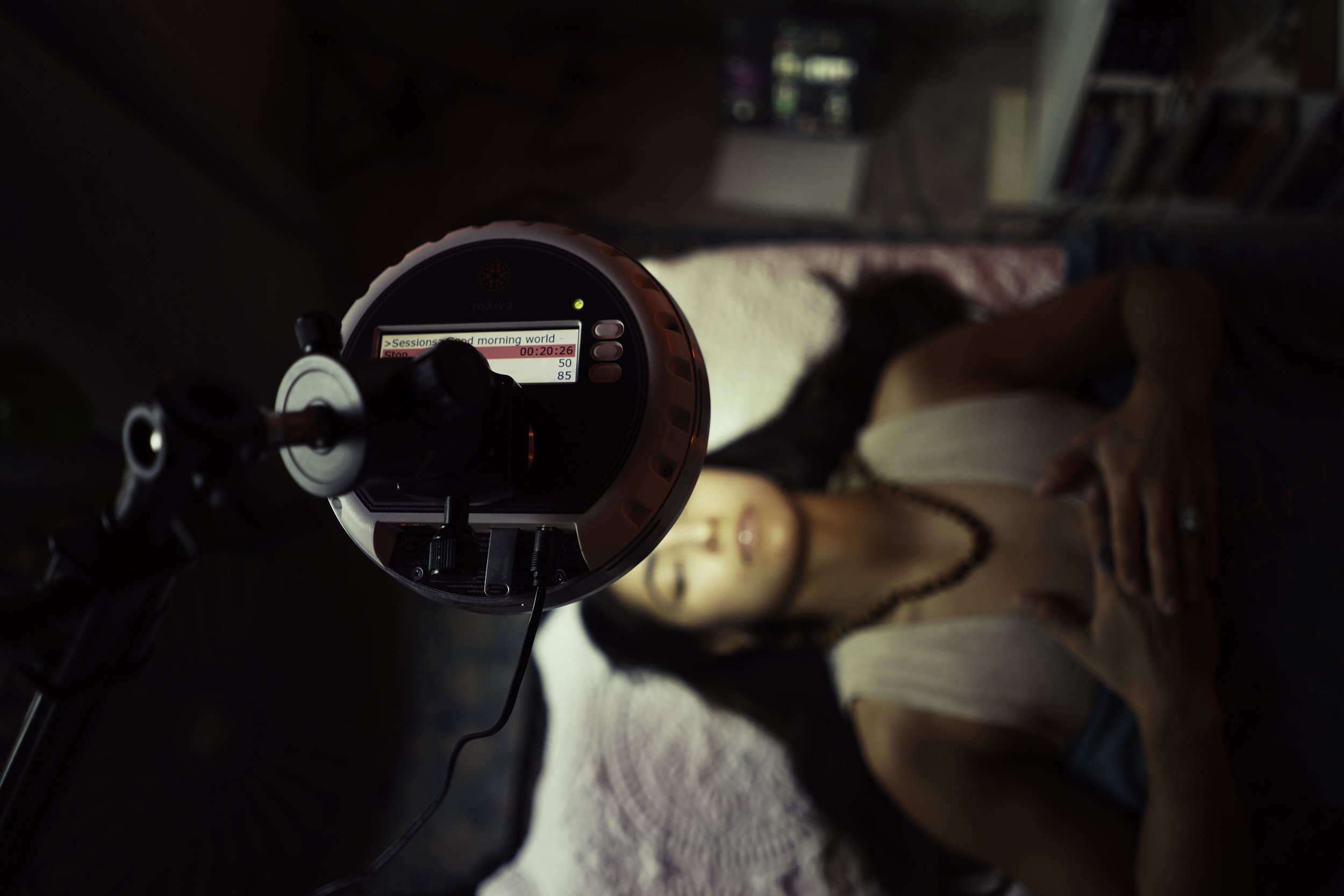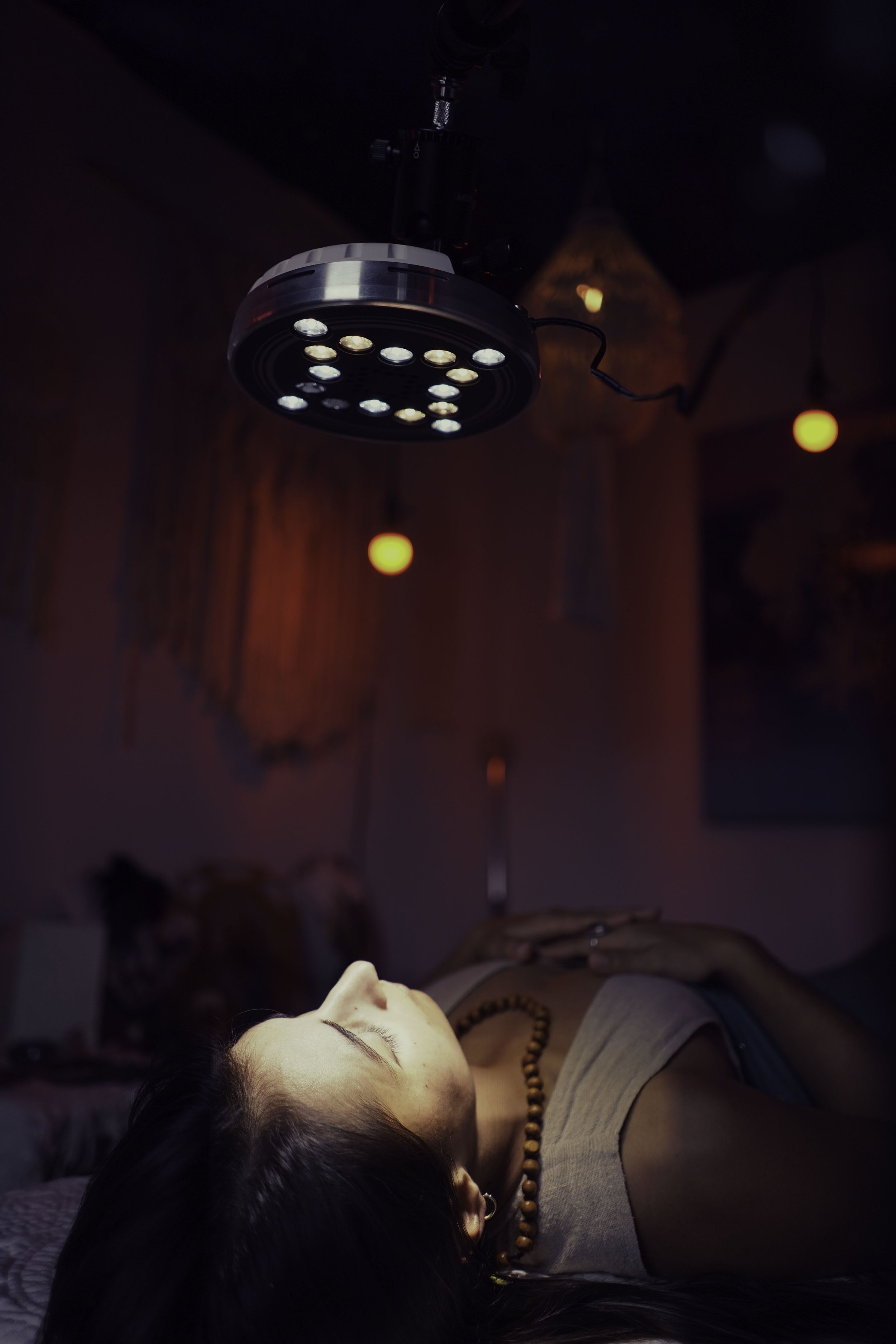
Deep Peace. Sharp Focus. One Session.
Where technology meets transformation.
Roxiva Light Therapy is a revolutionary blend of rhythmic light and sound, designed to guide your brain into deeply restorative, creative, and expanded states of consciousness.
This immersive experience supports nervous system regulation, enhances mental clarity, sparks creativity, and opens space for emotional and energetic healing—all without effort.
Each session is a journey inward—quieting the noise, awakening the senses, and revealing what’s possible when the mind and body are truly aligned.
Come experience Roxiva for yourself. Words can only take you so far.

Come home to inner harmony.
The science of brainwave entrainment
There is only so far that science can explain the sometimes miraculous results that people can have with brainwave entrainment. And there are scientific based explanations for some of the results that people get., and then there is what could be considered the magic.
The basic principle of brainwave entrainment
Brainwave entrainment (BWE) is also known as audio visual entrainment (AVE). And is the term used for the effect an external source of regular beats, flashes or vibrations has, on entraining and synchronizing the brains own frequency to that of the external stimulation. EEG-measurements show that our brain operates in bands of brainwave frequencies. All beneficial or challenging states of mind have an associated brainwave frequency signature. By knowing what brainwave frequencies are present during a particular state of mind., they can be introduced to encourage that state of mind. An example of this is what is called a Theta brainwave state. This is typically around 4-8Hz (Hertz) in frequency. And this means that every second there is 4-8 pulses of electrical activity across the brain. The theta state is considerd a deeply relaxing meditation state. And so by purposely entraining the brain to that frequency., the relaxing state can be produced. This is the basis of brainwave entrainment and it’s use.
Methods of brainwave entrainment
This entrainment can be done with sound, light, vibration or even certain electromagnetic pulses. Entrainment has other added benefits. Like being able to create inter-hemispheric synchronisation of both sides of the brain. And therefore improving communication between both hemispheres. Also, improved cerebral (brain) blood flow and very deep states of relaxation. In a natural and effortless way, our brain takes an unconscious cue from the external rhythm and frequency of almost any consistent significant rhythm, beat or pulse., synchronising our internal brainwave patterns to the same frequency. And over time, ‘entraining’ our brain into a state reflective of the speed/frequency of the stimulation.
Photic driving and SSVEPs
Brainwave entrainment and audio visual entrainment are well-studied practices. Light and sound waves have similar ways of entrainment and how they manifest in the brain. However light has a more powerful result on overall brain activity. The effect of light in the brain is measured by EEG and is called a photic driving response. And this is often referred to as a steady state visually evoked potential (SSVEP). These SSVEP’s cause brain synchronisation starting in the visual and auditory cortex’s, and then spread throughout the brain.
Waveforms and harmonics
A SSVEP is measurable in the brain at the fundamental frequency for all waveforms. The fundament frequency is the same as the external stimulation. And SSVEP’s also show as harmonics for most waveforms that are not sine waves. A sine wave is an analogue change. For light this would be like turning a dimmer up and down repeatedly. A square wave on the other hand is a digital change. The light is either fully on, or fully off. In the case of square waves and other types of waveform, harmonics are introduced. Harmonics are the result of the interaction of multiple sine waves that make up a square wave (or other waveform). Square waves are basically multiple sine waves joined together. A 50% duty cycle (light is on and off for equal time) square wave, will give harmonics as ‘odd numbers’ of the fundamental. For example, a 10Hz square wave will give a strong SSVEP at 10Hz, a weaker SSVEP at 30Hz and a minimal SSVEP at 50Hz. Above that the harmonic signal is very weak. And when the duty cycle of a square wave is changed from 50%, ‘even number’ harmonics are also introduced.
Relax. Reset. Reawaken.
Roxiva combines rhythmic light and sound to gently shift your brain into deep states of calm, clarity, and creative flow.
In just one session, clients often feel more grounded, inspired, and emotionally refreshed.
It’s not just relaxation—it’s a reset for your nervous system and your mind.
Book your first session today.
